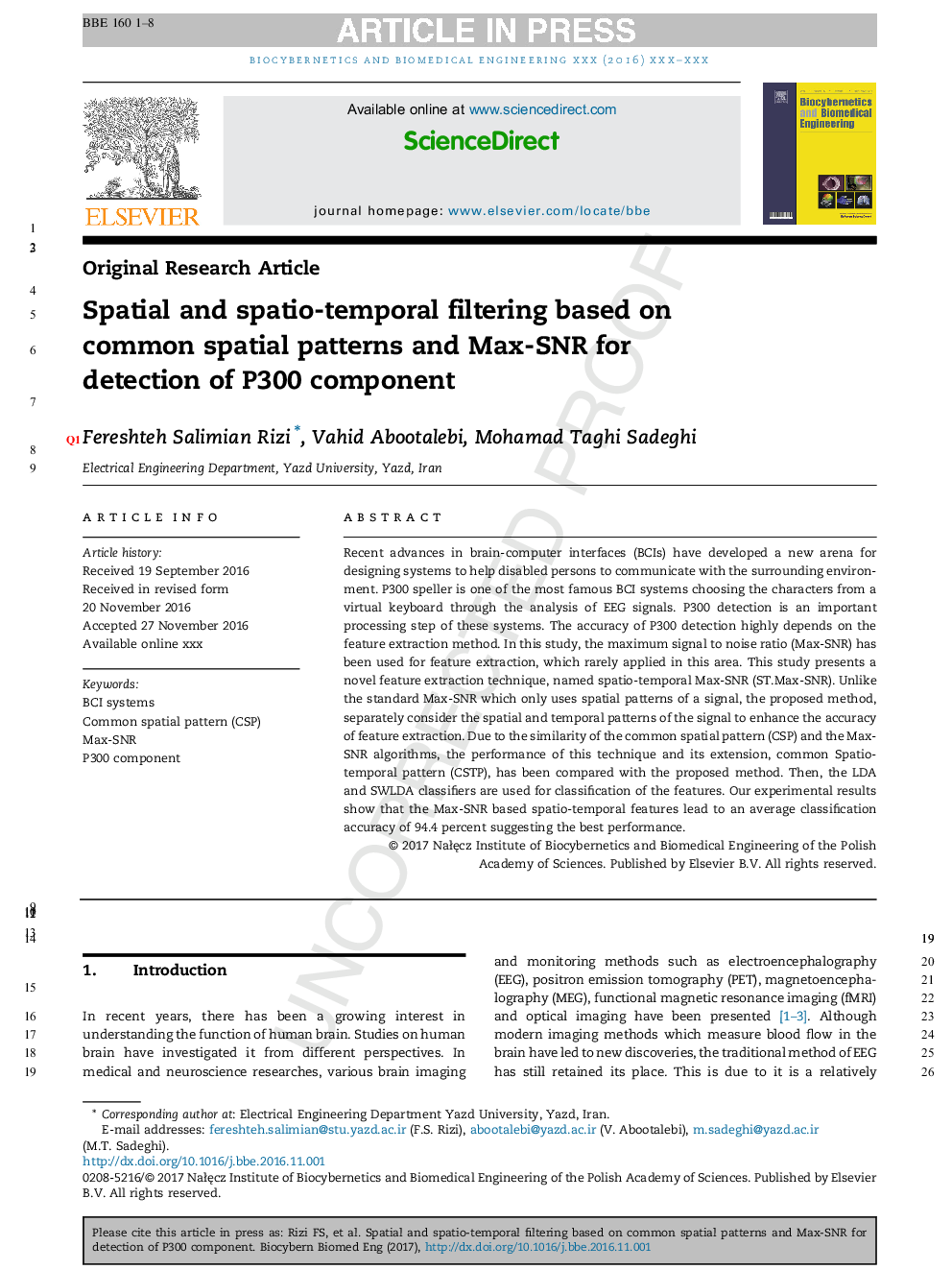| Article ID | Journal | Published Year | Pages | File Type |
|---|---|---|---|---|
| 6484208 | Biocybernetics and Biomedical Engineering | 2017 | 8 Pages |
Abstract
Recent advances in brain-computer interfaces (BCIs) have developed a new arena for designing systems to help disabled persons to communicate with the surrounding environment. P300 speller is one of the most famous BCI systems choosing the characters from a virtual keyboard through the analysis of EEG signals. P300 detection is an important processing step of these systems. The accuracy of P300 detection highly depends on the feature extraction method. In this study, the maximum signal to noise ratio (Max-SNR) has been used for feature extraction, which rarely applied in this area. This study presents a novel feature extraction technique, named spatio-temporal Max-SNR (ST.Max-SNR). Unlike the standard Max-SNR which only uses spatial patterns of a signal, the proposed method, separately consider the spatial and temporal patterns of the signal to enhance the accuracy of feature extraction. Due to the similarity of the common spatial pattern (CSP) and the Max-SNR algorithms, the performance of this technique and its extension, common Spatio-temporal pattern (CSTP), has been compared with the proposed method. Then, the LDA and SWLDA classifiers are used for classification of the features. Our experimental results show that the Max-SNR based spatio-temporal features lead to an average classification accuracy of 94.4 percent suggesting the best performance.
Related Topics
Physical Sciences and Engineering
Chemical Engineering
Bioengineering
Authors
Fereshteh Salimian Rizi, Vahid Abootalebi, Mohamad Taghi Sadeghi,
